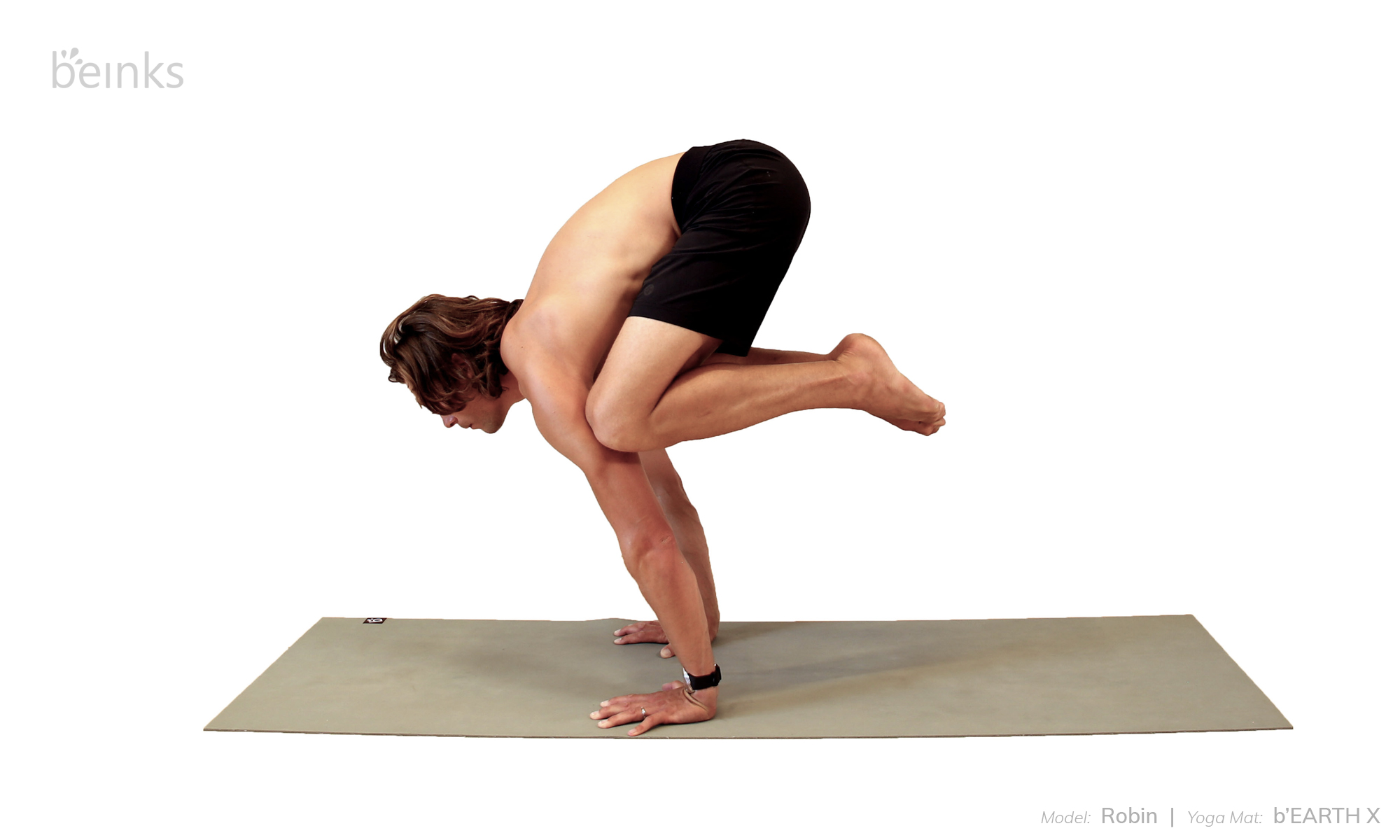Summary of Contents
About the pose
Crow pose (Crane Pose) or otherwise called as Bakasana in Sanskrit, is a powerful, yet simple arm balancing pose. Considered to be one of the first poses’ to master in the categories of Arm Balance poses, the flexibility of the shoulders and the wrists are put to test. When comparing it to the Crane bird, it should be kept in mind that despite the legs of the crane which are lean and long, the bird stands tall and strong for long hours, and this is what one needs to achieve while practicing this pose at an advance level.
Bakasana is considered a base pose as bakasana variations can be derived from this pose. Bakasana helps boost energy in the body and hence can be included in flow yoga sequences.
Anatomy
Bakasana benefits the following muscles and hence can be included in yoga sequences with the corresponding muscle(s) focus:
- Middle Back
- Upper Back
- Biceps and Triceps
How to do the pose
- Start in Malasana / Squat pose with the feet apart, knees wider than your hips.
- Place your hands flat in front of you on the floor as if you were in Downward Facing Dog – middle finger pointing forward and with your fingers spread.
- Firm your hands down, pressing through the whole of the hand and your finger tips.
- Keeping your elbows bent, lift the hips high.
- Place your knees on the back of your upper arms as high up as you can, or squeeze the outer upper arms with your knees. Hug the knees and elbows into your mid-line, exhale and round strongly through the upper back drawing your side waist up, using your abdominals.
- Then, squeezing in and up, bring the weight forward so the elbows end up straight over the wrist, bent at 90 degrees.
- Inhale, reach the heart forward and let one foot come up, then bring the other to meet it if possible. Bring the heels and big toes together.
- Stay for about 5/10 breaths all the time pressing firmly through the hands to feel the rebound lift.
- Exhale and come back into a squat position when you are ready.
Beginners tips
- Strengthens the wrists, arms, shoulders, inner thighs and core muscles.
- Mobilizes the upper back and hips.
- Over time this pose will make you feel strong and confident.
Benefits
- Fear is often the biggest obstacle when starting with arm balances like Crow Pose, so it can help to have a cushion nearby at first while you are getting used to it. Place it on the floor in front of your hands. You probably won’t use it but it’s there!
- You can practise the shape of the pose on your back first in Happy Baby Pose. This will also warm up your back and hips to help them release in this pose.
- You can start with raising just one foot keeping just the toe of your other foot to the floor.
- You need strength in the upper body, wrists and core for this pose so you can build it up by working on your Downward Dog, Chaturanga and Plank poses.
Watch out for
- Make sure that your wrists are properly aligned for Crow Pose. This is particularly important as once you get lift off in the pose it can become a little addictive!
- Your upper arms – it’s common to get bruises on the backs of your arms when you are starting out with Crow Pose. As you develop lightness in the pose through practice this will lessen. If it is particularly painful place your knees to your outer upper arms instead of resting on the backs of them.
FURTHER READINGS
- The complete yoga teachers’ guide – How to learn, earn & grow
- Free yoga resources – eBooks, music, asanas
- Yoga mat quiz – Which yoga mat is the best for me?
- Understanding about yoga
Variations
- Over time work on lifting the heels up towards the buttocks.
- Work on keeping the arms straight and the knees higher.
- Crow Pose is a gateway to all the other arm balances and can be used in transitions between poses such as Tripod Headstand


Credits
| Model | Robin (Yoga Peda) – An Ambassador of Beinks |
| Yoga Mat | b’EARTH & b’EARTH X by Beinks |
| Photographer | Sophie Dupont |
| Content | Tummee & Ekhart Yoga |


